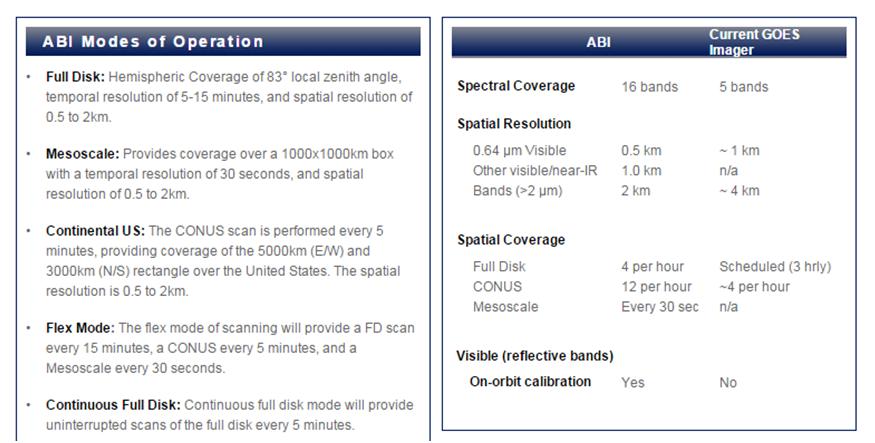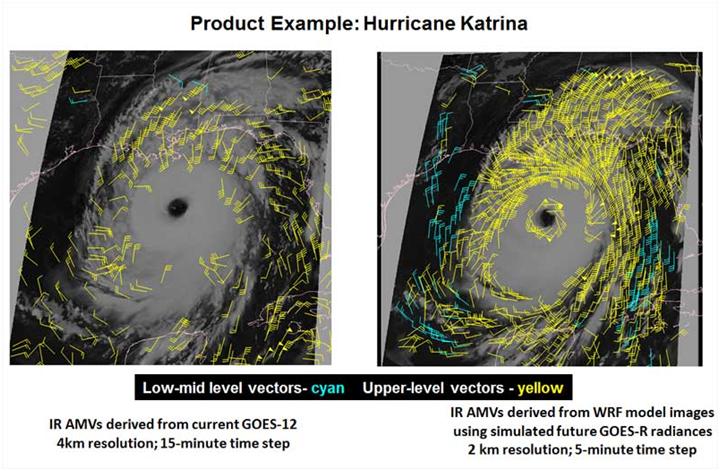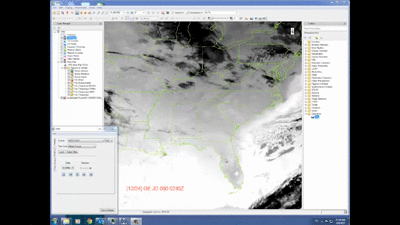Gearing up for Big Weather Data
Anonym
In the next few years there are some very exciting weather sensors being launched. NOAA’s weather work horse system, GOES, will get a new instrument GOES-R that will greatly improve the temporal, spectral,and spatial resolution of the weather imagery that gets used to make forecasts,watches and warnings. The Advanced Baseline Imager is the primary imaging instrument on GOES-R and built by our parent company, Exelis Inc. There is a similar system called the Advanced Himawari Imager (AHI) on Himawari-8 which is Japan’s weather satellite that launched last year. See the table below forABI’s improvements over the legacy GOES system.

GOES-R ABI facts from https://www.goes-r.gov/spacesegment/abi.html
The Mesoscale mode for imaging is a huge boon to severe weather forecasters. Getting imagery every 30 seconds of a hurricane or tornadic system will provide much greater forecasting detail as well as the ability to forensically model events. See image below showing kinds information more frequent imaging can provide.

https://www.goes-r.gov/spacesegment/abi-improvements.html
In ENVI 5.2 we released a raster series tool that did a great job telling stories about change in imagery. You could animate over one spot or through entire pass of Landsat data. For the casual remote sensing user it got the job done very well. Recently working with a weather customer, we found that animating through GOESimagery at a rate that you would see on the weather report or on a weatherwebpage with GOES imagery at full resolution (~1km pixel for the visiblechannel, 16,000 x 7,000 pixels) was taking a little longer to animate and loadthan we’d like. So our engineering team took the challenge and made some changes. The animation below shows the increased speed.

You are able to annotate and draw ROIs in ENVI while the image is animating, so imagine the type of information you extract while you’re animating—things that are changing. Things where you need the animation to see the change like a smoke plume, water turbitiy, geomorphology, or sea ice movement. Think of classifying features with the added temporal element. World vectors that come with ENVI can be overlaid, but also more local vectors, like home or property locations, so one can see areas being impacted by severe weather. Videos of the animation can be created and shared, all at full resolution. When weather data in the US takes a huge leap forward with GOES-R and ABI, ENVI will be ready to ingest the larger data volumes and provide animation and analysis support tools to go with that data.
Follow me on twitter @asoconnor